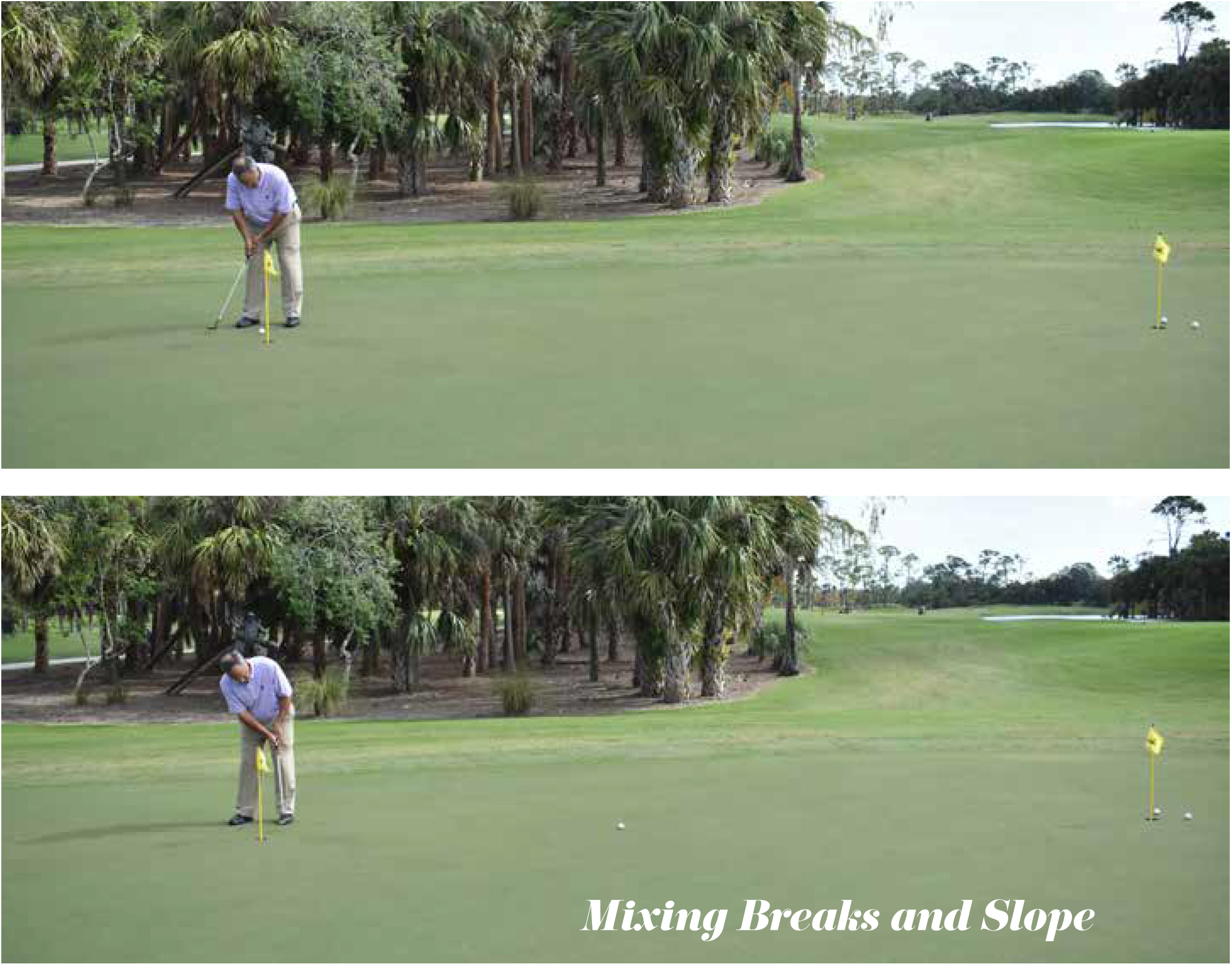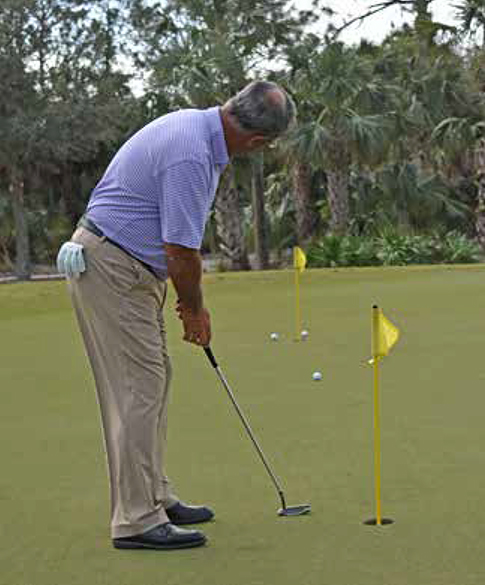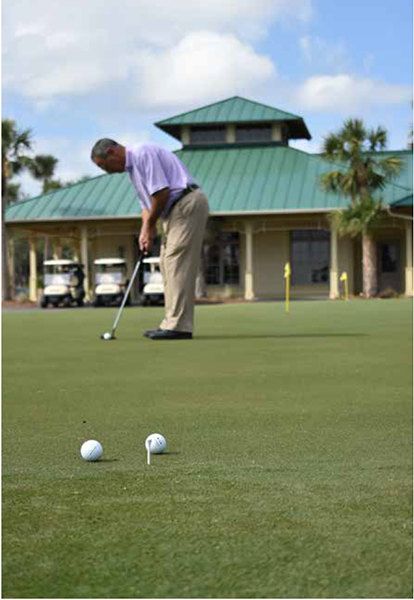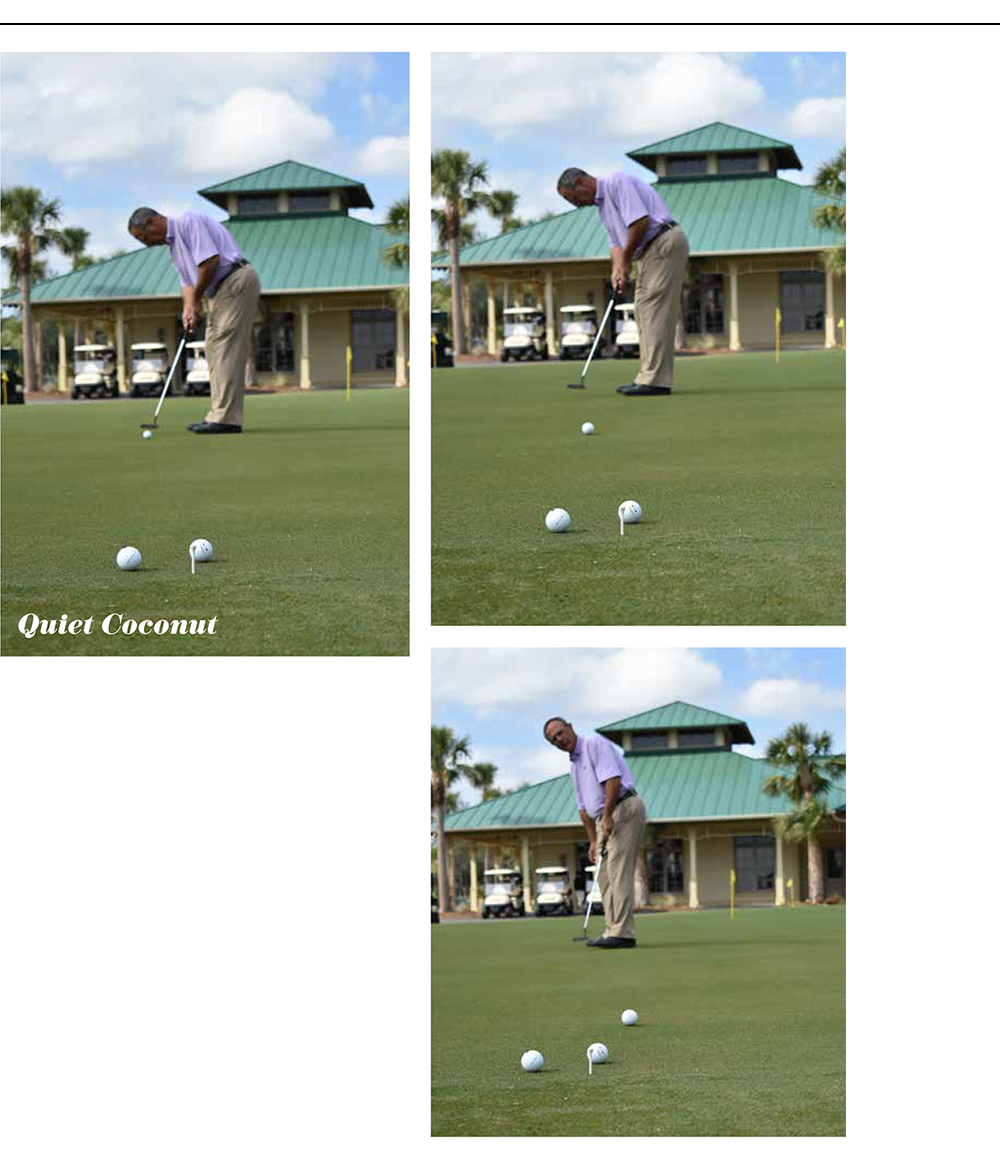To Putt Well, It’s Important; To Master The Art Form, It’s Vital
By Tom Patri, PGA | Photos by Vic Williams
At TP Golf Schools in Naples, Florida, every day I go to the lesson tee I will try — in an admittedly pre-meditated manner — encourage my students to spend time with me on the putting green. Some will take the bait. Sadly, most will not.
It is amazing to me in 2018 (soon to be 2019) how many recreational players fail to embrace the development of their putting games. Listen up, folks — without the putter as one of your strong suits, don’t plan on any truly low scores.
Within the skill set we call putting there are only two major aspects that need to be developed: line and speed.
During my 37-year-plus teaching and coaching journey, the aspect of the putting game that seems most lost in the recreational player’s tool box is speed control. I fully grasp that every putt that’s successful struck is in fact a line-speed coordination. In this piece I’d like to focus on speed control and leave line for a future lesson.
I’m not sure that I have ever seen more than a handful of my students ever fall in love with the development of that elusive and mystical quality called “touch.” There is no short cut to the development of touch. Let me be entirely clear — if you want to master touch with a putter, you must in fact, plain and simply, pick up the putter every day.
Each day I leave the house for work earlier then need be. After I finish setting up my lesson tee, I allot time — generally 30 minutes — to putt before my first lesson. In addition, if I get a last minute cancellation I again putt. Yes, I do hit balls generally at day’s end, but putting comes first. I learned early in my junior golf career to detest three-putting. I was told it was like kicking the family dog — you never did it, and if you ever did, it wasn’t forgivable.
Keep in mind most three-putts result from poor speed control on the first putt, leaving a second putt of a longer distance than hoped for. My late college coach, NCAA Coaches Hall of Fame member Charley Matlock, was well ahead of his time in terms of tracking his players’ stats. I remember we were playing in a college event at Bull Creek in Columbus, Georgia. I was paired in round two with future Ryder Cup player Chip Beck. We were both playing well and in the hunt. Charley was following us and on the 15th hole I three-putted. I remember feeling sick to my stomach and not particularly happy.
After the round I signed my card and was bee-lining it to the practice green. Charley intercepted me. He said, “Do you know that three-putt on 15 was your first in a competitive round in 144 consecutive holes?” Charley was trying to pick up my spirits. He asked me what I thought of that stat — he thought it was great. I looked him square in the eye and said, “Coach that’s one damn three-putt too many as far as I’m concerned!” Later, after I had graduated, he told me that was one of his favorite moments in his time at Florida Southern with me.
In this piece you’ll see a few simple drills I still do from my college days. They are strictly to develop a feel for distance. In addition to the pictured drills, the first thing I do every morning is drop three balls on the putting green and, to no specific target, putt them across the green. I’m trying to be aware of several things. The first thing I focus on is, am I hitting each putt in the center of the putter face? Second, I’m trying to make sure each putt is hit the same length, with the same pace and arm swing. Third, I’m trying to keep my coconut quiet — head still … not down … STILL — at least two to three seconds after I have sensed contact. I’m trying to heighten my awareness of what in fact is happening during my stroke.
Keep in mind you cannot change performance until you change behavior. To change behavior, you first must be 100 percent aware of what the behavior is that you want to change.

 .
.
In the above pictures I have chosen two holes at least 30 feet apart. I try to pick two holes so that in one direction I’m putting slightly uphill with a particular break — for example, left to right. Therefore, coming back the other way the putt is downhill with the opposite break. I play a game: I putt back and forth with three balls six times (18 holes ). I must putt each ball out. If I three-putt I have to start at zero again. Not only is this a speed control drill, but it simulates the pressure you feel on the course. Eighteen two putts or better or start again!
.
.
.
.
 I also like to put a single tee in the edge of the fringe and then back up 30 feet or more. I like the putt to be down- hill, fast and with a wide break. I’m strictly trying to lag the three balls closest to the tee but can’t reach the fringe.
I also like to put a single tee in the edge of the fringe and then back up 30 feet or more. I like the putt to be down- hill, fast and with a wide break. I’m strictly trying to lag the three balls closest to the tee but can’t reach the fringe.
I do this 18 times. Rules: First, I can’t touch the fringe and second, my ball cannot finish more than three feet from the tee. You guessed it, if I touch the fringe or finish with any ball more than three feet away, I start at zero again. I’m not finished until I have had 18 consecutive successes. Again, I’m simulating on-course pressure.
.
.
.
.
.
.
 Finally, take a very close look at the ground-level putting sequence of yours truly putting toward the tee in the fringe. Notice how my entire body and head stay very quiet well past impact. In fact, notice I don’t look for my ball until it has almost arrived at its destination some 30 plus feet away from me. To control speed you must control and develop ultra-consistent center face contact. COCONUT QUIET! GT
Finally, take a very close look at the ground-level putting sequence of yours truly putting toward the tee in the fringe. Notice how my entire body and head stay very quiet well past impact. In fact, notice I don’t look for my ball until it has almost arrived at its destination some 30 plus feet away from me. To control speed you must control and develop ultra-consistent center face contact. COCONUT QUIET! GT
Tom Patri is a Contributing Editor and Golf Tips Top 30 Instructor. He is a former Met (New York) PGA and South Florida PGA Teacher of the Year. He won the 1981 NCAA II National Championship. Tom is based in Naples, Florida and has summer teaching sites on Long Island, Maryland and Saratoga, N.Y. Visit www.tompatri.com to learn more about Tom and TPGolf..
www.golftipsmag.com March/April 2019







